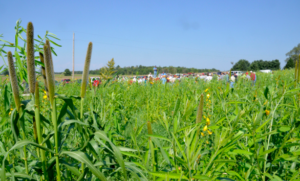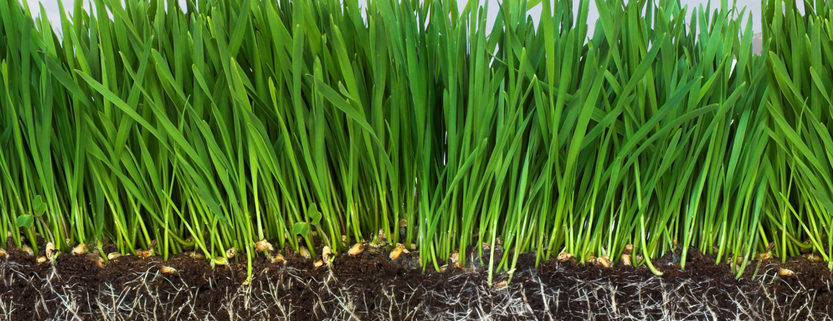Healthy Ground for a Healthy Environment
Two articles on the benefits of cover crops to soil health crossed my desk this month. The simultaneity of these articles piqued my curiosity. One article, “A Revolution With Deep Roots in the Past,” was in the New York Times and the other, “Healthy Ground, Healthy Atmosphere,” was in Environmental Health Perspectives’, a National Institutes for Environmental Health Sciences online publication. The crux of these cover crop articles is that by maintaining plant cover in fields intended for cash crops, farmers are able to rejuvenate the soil, prevent erosion, reduce fertilizer use, decrease the fuel consumption (by not having to till or fertilize), retain moisture, increase yields while also sequestering carbon, recharge the aquifer, and protect the watershed. Whew! The economic benefit is substantial. Mr. Rulon, a farmer in Indiana estimates net annual economic benefit from using cover crops is more than $69 per acre. Utilizing cover crops on 80% of his 6,200 acres translates to $342,240.00 in net economic benefit annually. In the State of Maryland, farmers are reimbursed for cover crop seed. Many other states have similar incentives to encourage the use of cover crops.
maintaining plant cover in fields intended for cash crops, farmers are able to rejuvenate the soil, prevent erosion, reduce fertilizer use, decrease the fuel consumption (by not having to till or fertilize), retain moisture, increase yields while also sequestering carbon, recharge the aquifer, and protect the watershed. Whew! The economic benefit is substantial. Mr. Rulon, a farmer in Indiana estimates net annual economic benefit from using cover crops is more than $69 per acre. Utilizing cover crops on 80% of his 6,200 acres translates to $342,240.00 in net economic benefit annually. In the State of Maryland, farmers are reimbursed for cover crop seed. Many other states have similar incentives to encourage the use of cover crops.
Reading about the multiplicity of benefits enjoyed by the farmers who have embraced cover crops, one wonders why all farmers aren’t using this technique. The reason is in part, lack of knowledge. One Indiana farmer commented on the complaints he hears from neighbors about his “messy” fields, abundant with cover crop. Those complaints could likely be rectified with some knowledge.
That little vignette reminds me how in the green building community, we hear similar objections about perceived “plant messiness” when proposing to plant areas of a project site with native species or as meadows. Rain gardens and bio-swales are not what might be conventionally considered “tidy” landscapes and yet their economic and environmental benefits are similarly exponential to the cover crops: reduced costs from not having to mow, fertilize or irrigate.  There are also benefits such as soil improvement, prevention of erosion, protection of the watershed and sequestration of carbon. But, perhaps the most convincing case to be made to a project owner or developer at the end of the day are tangible, visible cost savings. In spite of most people’s appreciation of and attraction to natural landscapes, when it comes to our human settlements, people have become accustomed to something they have come to perceive as more cultivated.
There are also benefits such as soil improvement, prevention of erosion, protection of the watershed and sequestration of carbon. But, perhaps the most convincing case to be made to a project owner or developer at the end of the day are tangible, visible cost savings. In spite of most people’s appreciation of and attraction to natural landscapes, when it comes to our human settlements, people have become accustomed to something they have come to perceive as more cultivated.
Similar to the fashion industry, our perception of beauty is fickle and fluctuates with the decades and trends. It is time to embrace the beauty of more natural environments in our own back yards as much as we embrace the natural beauty of our National Parks and Wilderness areas. A better understanding of the benefits will help. Once the economic benefits are presented side-by-side with the environmental benefits, one’s appreciation will rise. Using cover crops in agricultural endeavors is not a new invention – it is simply bringing back an old technique in current terms and we are realizing both its beauty and its value.
Doo Consulting provides sustainability consulting services for building owners and developers who are going to certify their buildings. A variety of consulting services are also available for municipalities, non-profits, funders and businesses from operations to policy.

